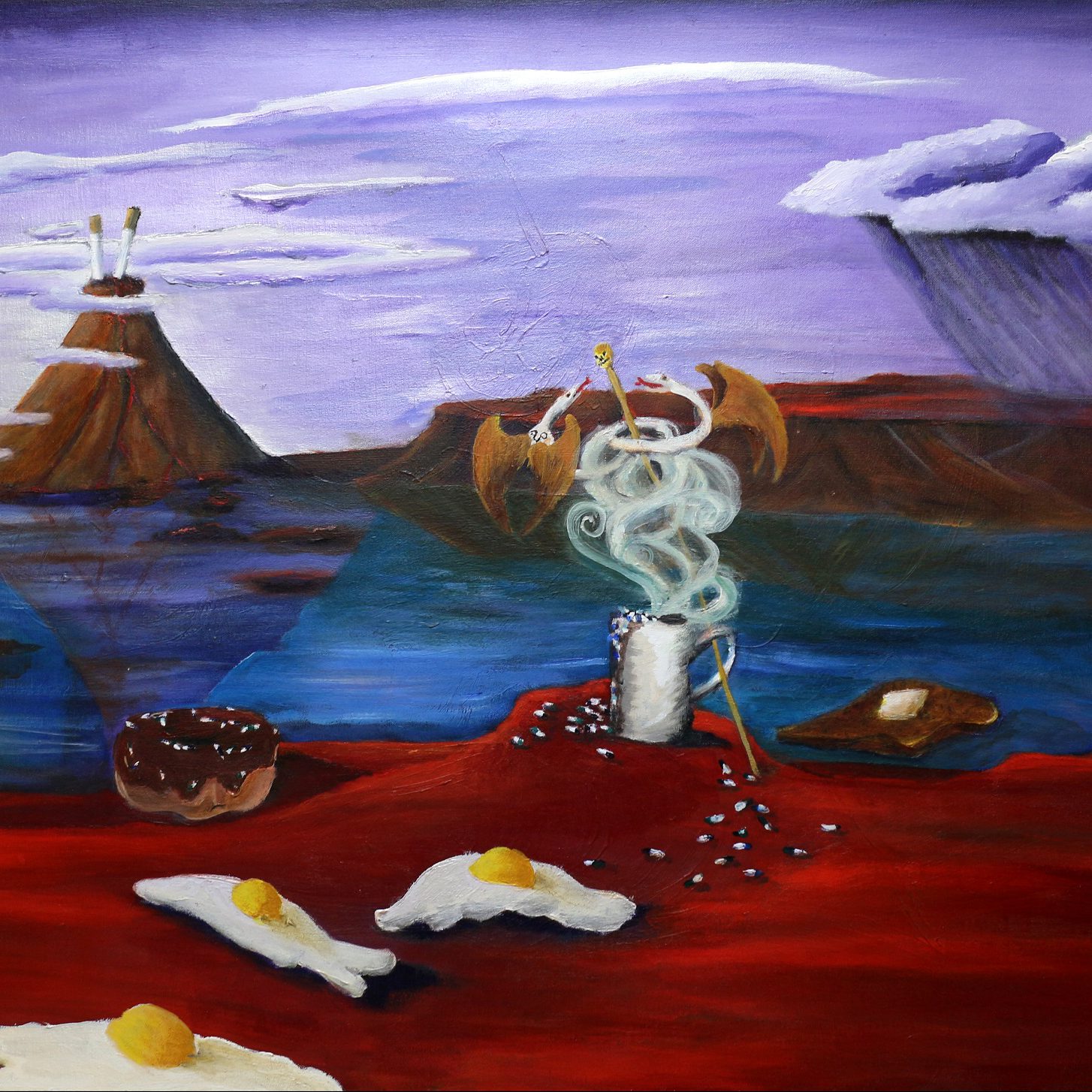Artwork: Tobias, Breakfast Objects, Acrylic on Canvas.
Almost 70 percent of Americans are taking at least one prescription drug, with more than half taking two, according to researchers at the Mayo Clinic and Olmstead Medical Center. Still, the act of taking medication remains stigmatized, with psychiatric medication bearing the brunt of that stigma.
Now organizers are making the annual art exhibition at Spectrum ArtWorks, a RESOURCE program providing artists living with mental illness resources and studio space, into a way to combat the stigma about the medicine-taking experience. “To Really See” is the title of this year’s exhibition, and everyone in the state can submit.
The exhibition came out of a conversation that Spectrum ArtWorks program coordinator Jes Reyes had with Dr. Paul Ranelli, a pharmacy professor at the University of Minnesota — Duluth, while the two attended the Minnesota Public Health Association’s annual conference last May.
Ranelli, an amateur photographer outside of the classroom, wondered how patients would photograph their medications to communicate with health professionals how their medicines make them feel.
“The times that people need to talk with pharmacists or should talk with pharmacists are very much an oral transmission of information,” Ranelli said. “[But] words maybe just don’t say enough. You don’t have enough time. You may be reluctant to say some things for some reason, embarrassed for whatever reason… Words may just fail you at a time when a picture could get an emotion out that you can’t duplicate with just words.”
Reyes and Ranelli became partners on the project and received an intramural grant from the University’s Imagine Fund, which supports innovative research in the arts, design and humanities. The exhibition expanded its call for submissions beyond photography to include more visual art mediums such as paintings, sculptures, drawings, installations and mixed media pieces. Reyes hopes that the open call will show that this topic extends far beyond psychiatric medications.
“It creates a larger conversation,” Reyes said, “a larger spectrum or landscape of artists contributing to our community.”
Martha Bird, the newest core artist of Spectrum ArtWorks, will complete two pieces of sculptural basketry, a more abstract form of basket weaving, for the exhibition. She plans to experiment with different weaves and materials to convey the struggles she experiences in her brain and the steps she takes to maintain her mental health.
In addition, Bird will submit a mixed media piece that serendipitously aided in her decision to go back on psychotropic medication after spending five years without. As she was making the piece, she wasn’t thinking, “This is about medicine,” but the process made her realize she needed more self-care. She needed to start taking medication again.
Every day doctors and pharmacists encounter an aversion toward taking medication, but Ranelli said this is improving. Medical professionals are educated to help people see the positive side of medication use while still acknowledging the difficulties that may result. Furthermore, many universities, including ours, are expanding research on how medications affect people based on their gene sequences, so prescriptions will grow more precise and individually tailored in the years to come.
“In general, I don’t think we would all get up in the morning, saying, ‘Boy, I have to take medicine today!'” Ranelli said. “But these medicines are very helpful to people. They can help you be productive members of society, still able to go to work, still able to be with your children or grandkids. “
Bird said she’s excited to see what the open call for art will bring. When she’s feeling upset or sad, she’ll often tell people she “needs to put beauty in [her] eyes,” then she takes a walk outside or visits an art gallery or museum. She hopes her own art brings beauty into the world as well.
“Even [when my pieces are] born out of what I’m struggling with,” Bird said. “I look at it and see so much hope.”
Spectrum ArtWorks is currently accepting submissions for To Really See. The deadline for art is May 15 and artists will be notified on June 30. You can view the call for art here for more details.

